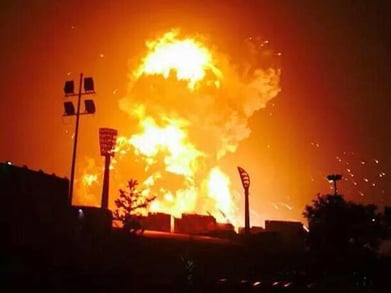 China has had a severe problem with industrial explosions in the past, with several being caused by combustible dust China has had a severe problem with industrial explosions with several caused by combustible dust accumulations. Now there is a guide for preventing these accumulations. The most recent industrial explosions, including the one at Tianjin explosion, have sparked international investigations and brought China’s safety standards under examination.
China has had a severe problem with industrial explosions in the past, with several being caused by combustible dust China has had a severe problem with industrial explosions with several caused by combustible dust accumulations. Now there is a guide for preventing these accumulations. The most recent industrial explosions, including the one at Tianjin explosion, have sparked international investigations and brought China’s safety standards under examination.
In the past few years there have been multiple factory explosions caused by dangerous levels of combustible dust accumulations, which then came in contact with an ignition source and exploded. Each investigation after these explosions revealed that the problem was due to a lack of official standards, as well as neglect on the part of company management and local officials.
As China modernizes to keep up with the global economy the government has been cracking down on outdated regulations and corrupt practices that are causing these issues. After an explosion caused by accumulations of aluminum dust at an automotive parts factory in August 2014 killed 146 workers the Chinese government stepped in to investigate. They arrested 18 people who had contributed to the working conditions and fired the two government officials in charge of the area.
Earlier, a Chinese plant that manufactured aluminum parts for Apple devices also had a deadly explosion due to aluminum dust accumulations. The international backlash and pressure from the companies that use China for manufacturing caused issues for Chinese manufacturing- Apple implemented new requirements for their suppliers and shut down any that didn’t meet standards.
These new safety standards were issued by the Chinese State Administration of Work Safety, and list the requirements on safety management for sites with combustible dust accumulations, anti-explosion measures, technology and procedures for safely removing dust, and other necessary safety requirements.
In the United States we have organizations such as OSHA and the NFPA that are aware of combustible dust hazards and have put forth regulations and standards for the best practices for safely managing dust accumulations.

